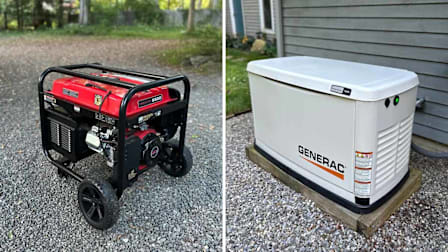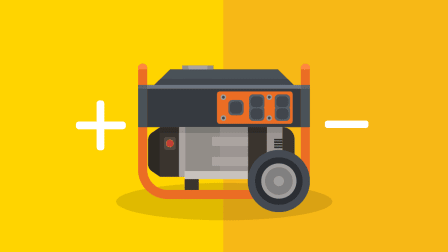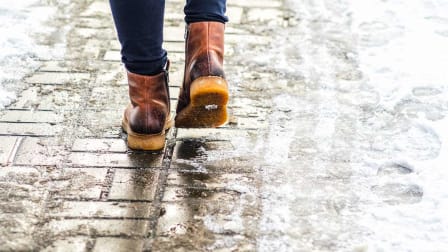CR's Ultimate Heat Survival Guide
Extreme heat has become a worrisome part of summer's new normal. Here's how to stay comfortable and safe.
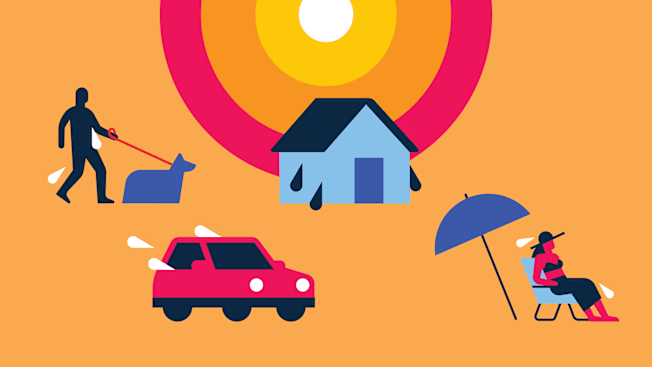
Last year was the warmest on record, with a number of cities in the U.S. breaking previous recorded temperature peaks—Dulles, Va., Fort Lauderdale, Grand Junction, Colo., Hartford, Conn., and Phoenix to name a few—according to the National Oceanic and Atmospheric Administration.
Extremely hot weather isn’t just unpleasant, it’s a serious health risk. More than 700 people die from extreme heat every year in the U.S., according to the Centers for Disease Control and Prevention.
“Recently, we’ve seen a lot of heat- and air quality-related issues, especially for those taking different medications for conditions like high blood pressure and diabetes,” says Rachel Marquez, MD, a family medicine physician with Kaiser Permanente in Virginia. “Heat-related illness—from the dizziness, nausea, and cramping of heat exhaustion to the slurred speech and weakness of heatstroke—can happen more easily at lower body temperatures for these individuals.”
- Tips for Inside Your Home: Before a Heat Wave Hits During a Heat Wave
- Tips for Outside Your Home: Before Heading Into the Heat While Outside
- Tips for Inside Your Car: Heatproofing Your Car Staying Cool While Driving
- Don't Let Extreme Heat Ruin Your Vacation
Excessive heat outlook: A heat wave is expected within three to seven days.
Excessive heat watch: Conditions are ripe for a heat wave within one to three days.
Heat advisory*: A maximum heat index temperature of 100° F or more, with nighttime temperatures of 75° F or higher, is expected within 12 hours and to last at least two days.
Excessive heat warning*: Extremely dangerous heat conditions. A maximum heat index temperature of 105° F or more for at least two days, with nighttime temps 75° F or higher expected within 12 hours.
Heat index: A measure of how hot it feels outside based on temperature and humidity. The latter is key: The more humid the air is, the longer it takes for sweat to evaporate and help you cool down.
Heat wave (or excessive or extreme heat): Abnormally hot (and possibly humid) weather for the time of year and area that typically lasts longer than two days.
*It’s important to prepare for these high-heat situations, according to the National Weather Service, by ensuring, for instance, that you‘ll have a place to stay cool and access to plenty of liquids to help you stay hydrated. To get forecasts for your area, go to weather.gov and type in your ZIP code.
Plan Ahead to Keep Your Home Comfortable
Even if you have air conditioning—like 88 percent of U.S. households, according to the U.S. Energy Information Administration’s 2020 Residential Energy Consumption Survey—you may still struggle to stay cool on the hottest days. What’s more, increased electricity use can lead to brownouts and outages. Here’s how to prepare your home for a heat wave before it happens:
Give your central AC some TLC. Have your central air units serviced annually, and replace the filters every one to two months during the summer for optimal cooling power. If you’re buying new, choose a system with a high seasonal energy-efficiency rating (SEER), which tells you how efficient a central air conditioner is. Or consider air conditioning alternatives. Evaporative coolers, which are best for a dry climate, chill outdoor air before it’s directed into your home. Another option is an energy-efficient electric heat pump, which provides cool air in summer and heat in winter.
Help your window AC beat the heat. Place window units in north-facing or shaded windows. A unit pounded by the sun will have to work much harder to cool a room. Keep heat-emitting objects such as computers, TVs, and lamps out of the line of the unit’s airflow for the same reason. Vacuum window unit filters every couple of weeks, wash the filters with warm water and soap at least every two months, and replace the filters when they’re worn.
Add insulation and seal up leaks. Check your windows for gaps that can let hot air in and pricey chilled air out. The Department of Energy recommends caulk for nonmoving elements (such as a fixed pane) and weather stripping for windows. For larger spaces around a window, use foam sealant. Have a certified or licensed contractor evaluate your attic insulation to ensure it’s adequate.
Consider bigger steps. Planting deciduous trees on the south side of your house provides shade in summer. Painting the exterior a light color will reflect heat instead of absorbing it. “Cool roof” coating materials can shed heat but are best in warmer climates, where you need less heat gain from the sun in the winter.
Install window treatments. Cellular shades can lower unwanted solar heat by up to 60 percent. Window reflectors reflect heat back outside, and awnings will shade windows and outdoor areas, reducing the amount of heat that gets inside.
Invest in an air purifier. High heat can diminish indoor air quality, increasing particulate pollution. An air purifier can significantly reduce such compounds. Also, be aware that a KF94 or KN95 mask may not be your best friend in hot weather when air quality is poor during events like wildfires. "One way we regulate body temperature is by exhaling," Marquez says, meaning that a heavy-duty mask may interfere with this heat-shedding mechanism. Wear a surgical mask instead.
Consider backup power. A generator can keep your AC and appliances running when the power is out. You may also want a battery- or solar-powered radio, or a portable power station to keep phones charged.
Find a cooling center. Many communities have places where you can go to cool down. To find one, call your local Office of Emergency Management or enter your ZIP code at 211.org. Or plan to head to a library, mall, or café.
Have a plan for important medications. If you need to refrigerate medications, be prepared for outages by keeping a small cooler ready to be filled with ice or cold packs, and a thermometer to monitor the temperature (keep it between 36° F and 40° F). If you have electric-powered medical devices, discuss backup power sources with your equipment supplier, power company, or police or fire department.
Keep Your Home Cool When the Heat Rises
Whether you’ve taken the actions listed above or not, these tips can help keep you from sweating it out at home when a heat wave hits.
Keep your house as cool as possible. If you have air conditioning, keep it running continuously. Close curtains or put up reflective panels to reduce unwanted indoor heat gain. Even light-colored clothes hanging inside a window or cardboard covered with foil can deflect warming rays.
Use your oven, cooktop, and dryer less. Use the cold-water setting on your washing machine and the air-dry setting on your dishwasher. For cooking, a multi-cooker, microwave, and/or toaster oven won’t heat up the kitchen the way your oven will.
Take cool baths or showers. Running a damp cloth over your skin or misting yourself with cool water leads to evaporative cooling, but don’t apply ice packs for long periods. Doing that can trigger shivering, which is how your body warms itself up.
Flip on a fan. Ceiling, portable, and window fans stir up breezes that speed sweat evaporation, helping you feel cooler. A ceiling fan, for instance, can make the temperature feel up to 4° F chillier, the Department of Energy says. Window fans typically pull outside air in and circulate it, so they may be most effective at night.
Chill out at night. Natural, breathable bedding fabrics such as cotton and linen allow sweat to dissipate instead of locking it in the way synthetic fibers like polyester and nylon may. People who sleep hot might consider a mattress cooling pad or a mattress that retains less heat on hot nights.
During a brownout, unplug. Minimize electrical usage by unplugging nonessential items (computers not in use, TVs) and using as little AC as you can.
If the power goes out, follow these tips. Stay on the lowest level of your home because heat rises. Keep the shades or curtains closed during the day to block the sun’s warming rays, and position battery-operated fans near cooler, shaded sides of your home. Keep your fridge and freezer shut as much as possible. (The refrigerator will keep food cold for only about 4 hours; a full freezer will maintain its temperature for about 48 hours.)
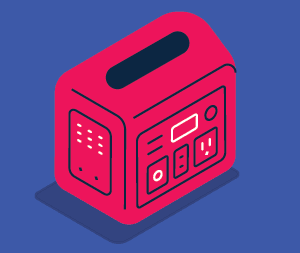
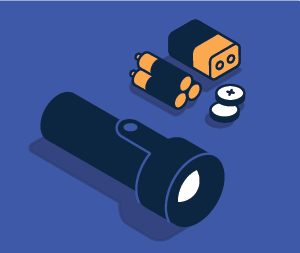
A solar charger can help keep devices running (the BigBlue 28W Solar Charger and Jackery SolarSaga 100W Portable Solar Panel stood out in our tests). Make sure you have a few working flashlights and plenty of batteries (don’t forget batteries for hearing aids, if you wear them).
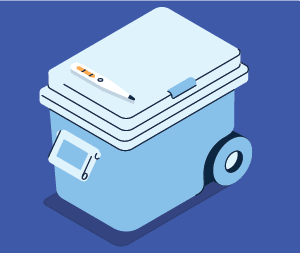
Use an oral thermometer to check whether you or a loved one is overly hot (above 103°F for adults).
Ice Chest
Fill an ice chest with ice or cold packs to store food or medication.
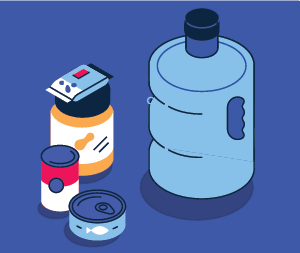
Stock nonperishable food (tuna and other canned items, crackers, peanut butter, granola bars, etc.). Plan on at least a gallon of water per person per day to last at least three days and up to two weeks.

Keep copies of key documents in a fireproof folder or safe. Stash some cash in case ATMs don’t work.
Prepare for Heat When You Leave the House
It’s risky to be outside in high heat, and the situation gets even worse when it’s humid. We cool ourselves by the evaporative power of sweating, which can’t happen efficiently when the air is full of moisture. According to the National Weather Service, a temperature of 90° F at 75 percent humidity will feel like 109° F on the heat index, an estimate of how hot it feels when air temperature and relative humidity are combined. Here’s what to do before you head out into the heat.
First, know when to stay home. Pay attention to the heat index and the Air Quality Index. During a heat wave, avoid unnecessary activity, especially if certain factors (age, medical conditions) could make you susceptible to heatstroke, Marquez says. If you do have to run errands, try to avoid being outdoors between 10 a.m. and 5 p.m.
Consider your wardrobe. Lightweight, light-colored clothes in natural materials are best. Wear a wide-brimmed hat to shade your face and UV-blocking sunglasses. For exercise or outdoor physical work in the heat, activewear that’s moisture-wicking (look for the term on clothing tags) is a good choice, says Michael Szymanski, a postdoctoral research associate at the University of Connecticut’s Korey Stringer Institute in Storrs. The clothing has tiny capillary-like structures that pull sweat away from the skin to the fabric’s surface, cooling you down.
Stock up on sunscreen. We’ve tested nearly 100 brands; see our sunscreen ratings and our recommendations for the best ones.
Try a better water bottle. Consider an insulated water bottle or cup. Coleman, Hydro Flask, Kanteen, Klean, Mira, and Stanley, among others, claim that their products keep water refreshingly cool for at least 24 hours. For walking, hiking, and cycling, consider a hydration backpack, which has a water pouch and built-in straw to let you sip on the go.
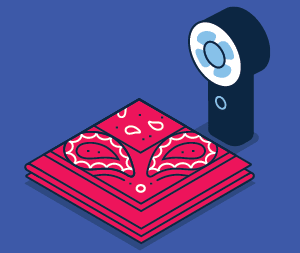
Wet the cloth to cool yourself down—or use it to shield your steering wheel from the sun when you’re out. A fan can help if the AC isn’t working.
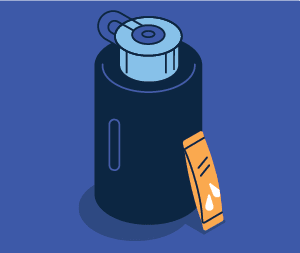
Tote along water and an electrolyte powder or tablet you can mix in.
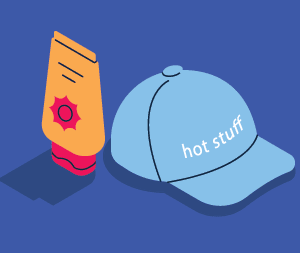
Keep extras in the car. You may have to walk to get help.
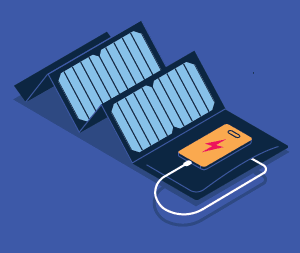
Charge your phone before you head out in case you need to call for a ride or for help. Or take a portable charger. The BigBlue 3 Portable 28W Solar Charger performed well in CR’s tests of solar chargers. The Anker Nano Portable Charger performed well in CR’s tests of portable chargers for phones.

It’s smart to have a few nonperishable, nonmelty snacks in your car if you’re stuck for a while.
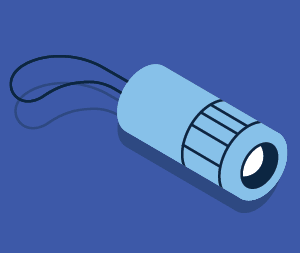
Take These Precautions When Outside
Drink plenty of water. You’ll want to drink about a cup every 90 minutes. (Ramp that up to a cup every half-hour if you’re working or exercising outside.) Remember that thirst isn’t the best indicator of when to drink; when you get thirsty, you’re already dehydrated. Also, if you aren’t urinating at least every 4 hours or you’re feeling fatigued, thirsty, or dizzy, drink more. If you’re sweating, add electrolyte-based drinks (like sports drinks) to replenish lost salts, Marquez says. Skip caffeine and alcohol, which are diuretics that draw moisture from the body. If you find it hard to hydrate as much as you should, set alerts on your phone as a reminder. Sipping small amounts of liquids throughout the day, adding slices of citrus to a pitcher of water, and eating high-water foods such as fruit can also help you get enough liquid when the heat is on.
Be careful on hot pavement. It can be hotter than the surrounding air, and a fall can lead to burns. Hot pavement may harm a dog’s paws, so stay on grass or use protective booties.
Adapt your plans. If it’s much hotter out than you realized, head for shade or AC. In a pinch, duck into a restroom to cool yourself with a damp paper towel on the back of your neck or on your forehead.
Don’t get too much sun. A sunburn can increase the likelihood of dehydration and heat illness, so be diligent about protection, even on cloudy days. Seek shade between 10 a.m./11 a.m. and 5 p.m. when possible, Szymanski says. When you’re in the sun, wear a wide-brimmed hat and apply sunscreen with an SPF of at least 30; SPF 50 is better. Reapply every 2 hours and immediately after swimming or sweating.
Watch out for hot-car hazards. A car’s interior can heat up by 40° F within an hour, which can lead to dangerous or even deadly temperatures. Never leave anyone—especially children, who heat up far faster than adults, or pets—unattended inside a vehicle. Note: New cars from more than 15 manufacturers offer back seat occupancy reminders to reduce the risk that someone will be left in a vehicle on a hot day. Tesla’s Dog mode feature can keep the vehicle’s HVAC operating when it’s parked.
Replace what sweat steals. If you’re seriously sweating through a heat wave, working outside, or exercising in the heat, snag something with electrolytes. These substances, which include sodium and potassium, are key to helping you retain fluids and ward off dehydration while sweating. Sports drinks contain electrolytes, as do a number of hydration supplements—powders and tablets you can add to plain water. Hydration supplements you may see include Hydrant, LMNT, Nuun, and Skratch Labs Sport Hydration Drink Mix.
Live the life aquatic. Taking a dip on a blistering hot day delivers a double dosage of relief. You feel cooler while swimming, and the evaporation of the water on your skin afterward will chill you further. Taking a cool bath or shower, wiping a damp cloth over your skin, spritzing yourself with cool water from a mister, or dunking your hat in water before putting it back on your head can lower your body temperature, too.
For a quick chill, place a cool, damp cloth on pulse points. These include your armpits, forehead, and the back of your neck. Doing this helps cool the blood circulating throughout your body. But be cautious about ice baths or using ice packs on pulse points for prolonged periods. You may cool yourself too much, causing you to shiver, which is your body’s attempt to generate heat—the opposite of what you want.
If you feel sick, take action. Get to a cool place, loosen your clothes, and remove layers; take a cool bath or shower, or put cool, damp cloths on your body. Drink water or sports drinks. Get medical help if you experience confusion, dizziness, weakness, agitation, slurred speech, nausea, or vomiting. Below are signs to look out for.
Heat cramps: Marked by muscle spasms or pain and possible heavy sweating during intense physical activity. Stop, get to a cool place, and drink water or a beverage with electrolytes. Get medical help right away if you have heart problems, you’re on a low-sodium diet, or your cramps last longer than an hour.
Heat exhaustion: If not addressed, this can progress to heatstroke. Signs may include heavy sweating, fatigue, weakness, a cold, clammy feeling, a pale appearance, a fast but weak pulse, nausea or vomiting, muscle cramps, a headache, and even fainting. Cease physical activity, get to a cool place, use a wet cloth or take a cool bath to lower body temperature, and sip water. Get medical help right away if you vomit or your symptoms worsen or last longer than an hour.
Heatstroke: This can be fatal if not addressed, so call 911 ASAP if you experience confusion or agitation, fainting, and an inability to sweat. While awaiting help, rest in an air-conditioned room or get into a cool shower or bath. Don’t drink anything.
Heatproofing Your Car
When the AC is pumped to the max, your car can feel like a chilly oasis. But if something goes wrong, the interior temperature can climb to dangerous levels very quickly. According to the Centers for Disease Control and Prevention, temperatures can rise almost 20° F in the first 10 minutes, even with a window cracked. Avoid this situation by making sure your car is ready for hot weather before it arrives.
Check your car’s condition and assess coolant levels. You can look under your hood while the engine is off and cool (some autos have translucent reservoirs) or let your local shop check for you. Replacing the cabin filters once or twice a year, which can get packed with dirt and pollen, helps optimize airflow, says Michael Crossen, Consumer Reports’ automotive technician. Also, check your tire pressure and condition.
De-gunk the grill. Remove leaves and debris, which could lead to your car overheating.
Service your battery. Have the battery’s charge, terminals, and mounting checked out at a dealer or repair shop to see whether it’s time for a replacement. You should also get your electric vehicle or hybrid battery evaluated before a long trip.
Shade your windows. Use a reflective panel in your windshield when you park and add a shade to a panoramic sunroof (both available at Amazon and auto parts shops). Ask your dealership or detail shop about ceramic window tinting, a multilayered film infused with microscopic ceramic particles. It can block a high percentage of UV light to keep the interior cooler.
Stay Cool While Driving
Get the most from the AC. Don’t waste time and gas trying to precool the car; start driving to get the compressor working efficiently. Open all the windows for 10 or 20 seconds to flush out any superheated air inside. Set the system to the lowest temperature, then adjust the fan setting for comfort.
Consider seat-cooling. Use this function if your car has it. If not, it’s a feature to look for if you’re car shopping in a high-heat area.
Pick up a cross-breeze. If your AC fails, open windows on opposite sides in the front and back seats. This creates cross-ventilation (but may not provide enough relief for a lengthy drive).
Don’t sit inside. If your car breaks down, leave the vehicle. The temperature will rise quickly (and another car could hit you). Seek shade while waiting for help.
Don't Let Extreme Heat Ruin Your Vacation
In recent years, we’ve seen travel plans derailed by heat waves across Europe and Canada. This summer could be a repeat of that. And high heat can also affect public transportation. Here’s some advice for making sure your summer travels aren’t interrupted.
Pack a few extras. Take along a foldable wide-brimmed hat, sports drink powder, a handheld battery-powered fan, and individually wrapped cooling wipes (available on Amazon).
Consider booking refundable flights. If you knew you were flying to Rome and it would be 107° F when you got there, would you still want to go? Refundable tickets and hotels with flexible cancellation policies let you cancel without a big loss. Also, check whether hotels have AC; it’s not always the norm.
Get the right travel insurance. A policy that covers medical care can be a lifesaver if you have a heat-related illness.
And follow these tips while you’re on the road:
No hotel AC? Cool your face and wrists with water, and take cool showers or baths. Spend plenty of time in other air-conditioned spaces.
Charge your phone before you head out. Take a charger with you and keep emergency numbers handy. You can also put your phone on power-saving mode and dim the screen to reduce battery use.
Know that foods spoil faster in heat. The Department of Agriculture warns that food should not be left out for more than an hour in temperatures over 90° F. So think twice about what you eat, especially street-vendor temptations.
If you feel sick, seek shade and hydrate. If someone has signs of heatstroke (lack of sweating, skin that’s hot to the touch, dizziness, confusion, or loss of consciousness), call 911 or the correct local number. Your hotel’s front desk can probably help.
Editor’s Note: Portions of this article appeared in the August 2022 and July 2024 issues of Consumer Reports magazine.

















